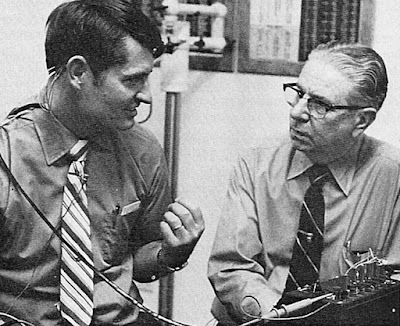Otosclerosis
Otosclerosis is a bone disease that affects human temporal bones. An orthopedist, Howard Frost, compared it to a demolition, which contains all of the materials of a house but has no architecture. Normal bone has a precise architecture, otosclerotic bone does not.
In about 10 per cent of the patients, otosclerosis produces a hearing loss due to a fixation of the stapes, that interferes with the transmission of sound from the middle ear to the inner ear. In a smaller percentage of cases there is inner ear hearing loss, related to larger amounts of diseased bone in the cochlea.
When I was in Saint Louis I became involved with histochemistry of the cochlea, which was the subject of my Master’s thesis. When Dr. Theo E. Walsh began to do stapedectomies – operations to replace the stapes with a prosthesis in patients with otosclerosis – I asked him to give me the stapes footplates for histochemical studies. The histology of otosclerosis was well known, but it had been studied only in cadavers’ temporal bones. At that time, however, histochemistry demanded live tissues. And now these would be available.
So I would be in the operating room and as soon as Dr. Walsh would remove the stapes footplate, whether whole or in small pieces, I would pick up the specimens and run to the laboratory to freeze-dry them. After I would proceed with the histochemical work, which involved the preparation of many different reagents. A few years later they all became commercially available, but I had to prepare them in the laboratory.
This was the first paper to be published on the histochemistry of otosclerosis *.
* Albernaz PLM, Covell WP. Otosclerosis of the Stapes. A study of the lesion by histochemical procedures and fluorescence microscopy. Laryngoscope. 1961; 71: 1333-1353.
In about 10 per cent of the patients, otosclerosis produces a hearing loss due to a fixation of the stapes, that interferes with the transmission of sound from the middle ear to the inner ear. In a smaller percentage of cases there is inner ear hearing loss, related to larger amounts of diseased bone in the cochlea.
When I was in Saint Louis I became involved with histochemistry of the cochlea, which was the subject of my Master’s thesis. When Dr. Theo E. Walsh began to do stapedectomies – operations to replace the stapes with a prosthesis in patients with otosclerosis – I asked him to give me the stapes footplates for histochemical studies. The histology of otosclerosis was well known, but it had been studied only in cadavers’ temporal bones. At that time, however, histochemistry demanded live tissues. And now these would be available.
A stapes footplate as seen in the fluorescent microscope
So I would be in the operating room and as soon as Dr. Walsh would remove the stapes footplate, whether whole or in small pieces, I would pick up the specimens and run to the laboratory to freeze-dry them. After I would proceed with the histochemical work, which involved the preparation of many different reagents. A few years later they all became commercially available, but I had to prepare them in the laboratory.
This was the first paper to be published on the histochemistry of otosclerosis *.
* Albernaz PLM, Covell WP. Otosclerosis of the Stapes. A study of the lesion by histochemical procedures and fluorescence microscopy. Laryngoscope. 1961; 71: 1333-1353.




Comments
Post a Comment